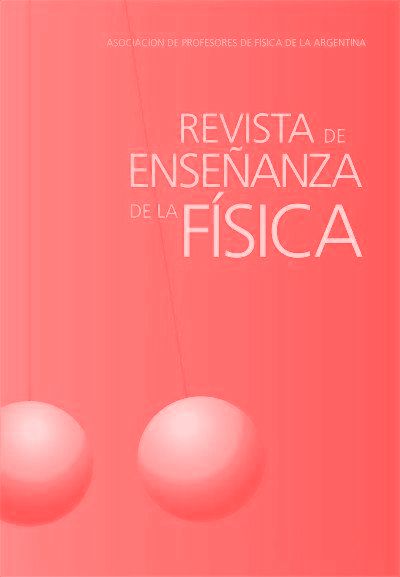Facebook in b-learning modality in Physics
DOI:
https://doi.org/10.55767/2451.6007.v32.n2.31323Keywords:
Virtual learning; B-Learning; Social networks; Physics teaching; FacebookAbstract
This study presents a reflective analysis of the teaching-learning process at the high school level. It addresses the educational model of mixed learning with sixth semester students (16 to 18 years old), considering the use of Facebook in the teaching of Physics IV topics, to identify its potential in the educational field. The methodology was based on didactic engineering, consider-ing the conceptual gain. Some implementations supporting the use of social networks popularly used by students, that can be made in the future, are suggested.
References
Aberšek, B. (2017). Evolution of competences for new era or education 4.0. The XXV Conference of Czchec of Educa-tional Research Association.
Artigue, M., Douady, R., Moreno, L., y Gómez, P. (1995). Ingeniería didáctica en educación matemática. Bogotá: Grupo Editorial Iberoamérica.
Avila, P. y Rama, C. (Eds.) (2017). Internet y educación: amores y desamores. México: INFOTEC.
Bartolomé, A. (2004). Blended learning. Conceptos básicos. Píxel-Bit Revista de Medios y Educación, 23, 7-20.
Bastarrechea, N. (2015). Guía de Facebook para educadores. Una herramienta para enseñar y aprender. Londres: The education foundation.
Cerdà, F. L. y Planas, N. C. (2011). Facebook’s potential for collaborative e-learning. International Journal of Educa-tional Technology in Higher Education, 8(2), 197-210.
Coaten, Neil. (2003). Blended e-learning. La opinión de los expertos. Monográfico número 69, suplemento del boletín Educaweb.com
García Daza, V. (2014). Aplicación de la ingeniería didáctica como metodología para favorecer el desarrollo de com-petencias a partir de los sistemas de ecuaciones lineales. Tesis de Maestría en Enseñanza de las Ciencias Exactas y Naturales. Universidad Nacional de Colombia.
Hake, R. (1998). Interactive-engagement versus traditional methods: A six-thousand-student survey of mechanics test data for introductory physics courses. American Journal of Physics, 66(1), 64-72. Doi: https://doi.org/10.1119/1.18809
Instituto Politécnico Nacional (2004). Un nuevo modelo educativo del IPN. Materiales de la reforma. México: Direc-ción de publicaciones IPN.
Javitt-Jiménez, M. (2019). Uso de Facebook como herramienta del Blended Learning en la formación profesional. Mayéutica Revista Científica De Humanidades y Artes, 8, 82-104.
Kustijono, R. y Zuhri, F. (2018). The use of Facebook and WhatsApp application in learning process of physics to train students’ critical thinking skills. IOP Conf. Series: Materials Science and Engineering. doi:10.1088/1757-899X/296/1/012025
Llorente, M. y Cabero, J. (2008). Del e-learning al Blended Learning: nuevas acciones educativas. Quaderns Digi-tals, 51.
Pearson, K. (1897). Mathematical contributions to the theory of evolution. On a form of spurious correlation which may arise when indices are used in the measurement of organs. Proc. R. Soc. Lond., 60, 489-498. http://doi.org/10.1098/rspl.1896.0076
Romero, A. (2015). El b-Learning y la física. Vida Científica Boletín Científico de la Escuela Preparatoria No. 4, 3(6).
Secretaría de Salud de la Ciudad de México. (2019, junio 1). Secretaría de Salud de la Ciudad de México mantiene alerta por contingencia ambiental. Disponible en https://www.salud.cdmx.gob.mx/comunicacion/nota/14052019-secretaria-de-salud-de-la-ciudad-de-mexico-mantiene-alerta-por-contingencia-ambiental
UNESCO. (2017). Enfoques estratégicos sobre las TICs en educación en América Latina y El Caribe. Disponible en: http://www.unesco.org/new/es/media-services/single-view-tv-release/news/strategic_approaches_on_the_use_of_tics_in_education_in_lati/
Valiathan, P. (2002). Blended learning models. Learning circuits, 3(8), 50-59.
Downloads
Published
Issue
Section
License

This work is licensed under a Creative Commons Attribution-NonCommercial-NoDerivatives 4.0 International License.
Aquellos autores/as que tengan publicaciones con esta revista, aceptan los términos siguientes:Los autores/as conservarán sus derechos de copiar y redistribuir el material, bajo los términos estipulados en la Licencia de reconocimiento, no comercial, sin obras derivadas de Creative Commons que permite a terceros compartir la obra bajo las siguientes condiciones:
- Reconocimiento — Debe reconocer adecuadamente la autoría, proporcionar un enlace a la licencia e indicar si se han realizado cambios. Puede hacerlo de cualquier manera razonable, pero no de una manera que sugiera que tiene el apoyo del licenciador o lo recibe por el uso que hace.
- NoComercial — No puede utilizar el material para una finalidad comercial.
- SinObraDerivada — Si remezcla, transforma o crea a partir del material, no puede difundir el material modificado.
- Los autores/as podrán adoptar otros acuerdos de licencia no exclusiva de distribución de la versión de la obra publicada (p. ej.: depositarla en un archivo telemático institucional o publicarla en un volumen monográfico) siempre que se indique la publicación inicial en esta revista.
- Se permite y recomienda a los autores/as difundir su obra a través de Internet (p. ej.: en archivos telemáticos institucionales o en su página web) antes y durante el proceso de envío, lo cual puede producir intercambios interesantes y aumentar las citas de la obra publicada. (Véase El efecto del acceso abierto).










